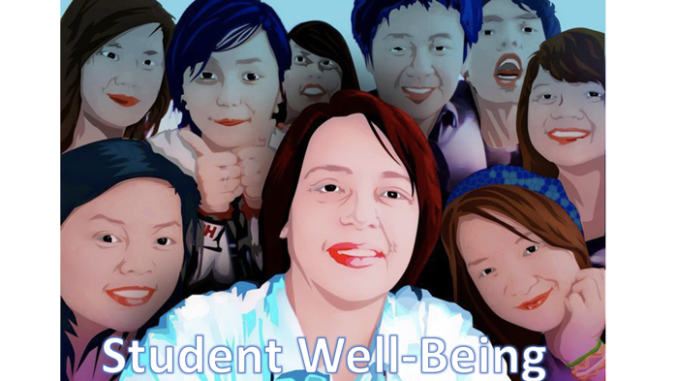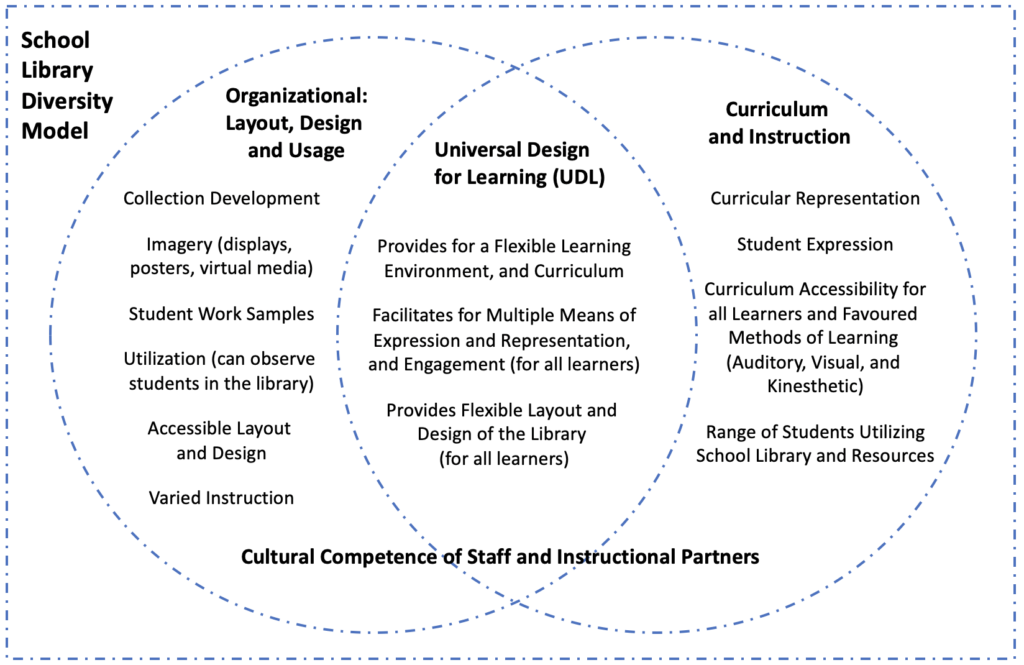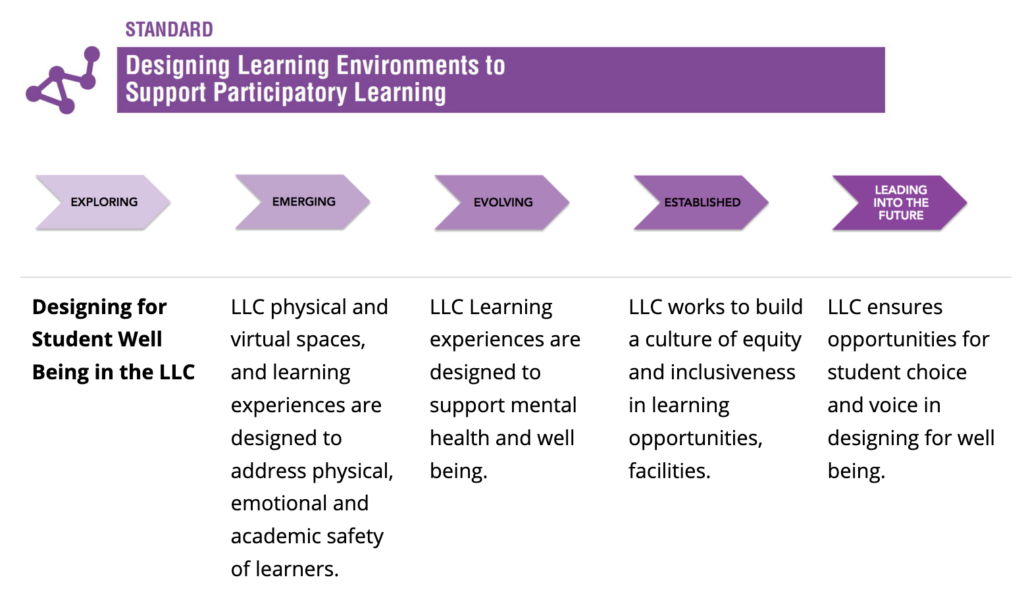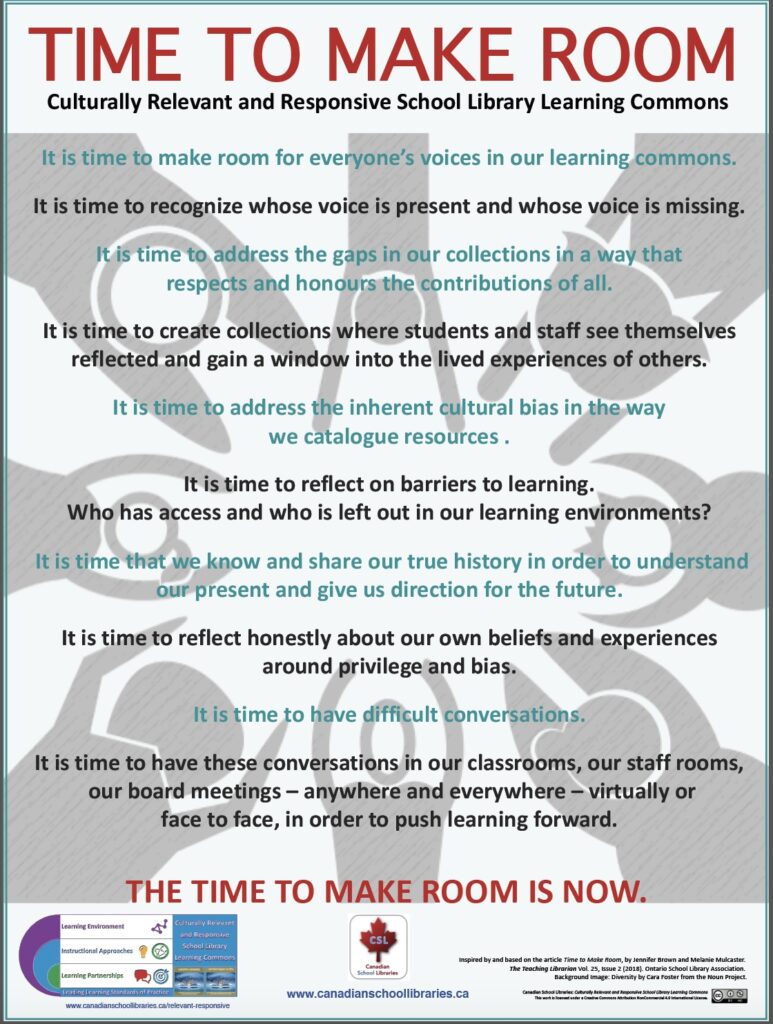
By Anita Brooks Kirkland
This article was written for publication in Synergy, the journal of the School Library Association of Victoria, Australia. Published in CSL Journal with permission.
Understanding the library as a safe space is part of our professional psyche. We all have stories of how our libraries have provided a place of refuge and acceptance for our most vulnerable students. We have been courageous in developing collections that help students develop their own self-identity and sense of self-worth. We intentionally collect resources and support initiatives related to mental health, addiction, and challenging social issues. We fiercely protect our students’ right to privacy as they explore dangerous ideas in the safe space of the library.
Being a safe space, where students are welcomed and valued, is a vital part of the library. But is that really enough? The stressors of the pandemic combined with unprecedented social change have made it very clear: we are not all fine, and nor are our students. Everyone needs support in keeping well. What can we do in the school library to enable all students to flourish and thrive socially, mentally, emotionally, cognitively, culturally, and physically? It is very clear that we need to expand our understanding of how to support the well-being of all students in an intentional and wholistic way.
Supporting student well-being has become a priority for Canadian teacher-librarians. As we explore the issues, I hope you may take inspiration from the many associated projects from Canada’s school libraries.
New Ways of Thinking about Student Well-Being
In its 2015 Program for International Assessment (PISA) report on student well-being, the Organization for Economic Cooperation and Development (OECD) provides this definition.
“Students’ well-being refers to the psychological, cognitive, social and physical functioning and capabilities that students need to live a happy and fulfilling life.”
(OECD, 2015)
PISA’s definition focuses on positive outcomes for all students, a significant shift from traditional approaches that focus on threats to children’s mental and physical health.
“It is now important to develop international data that extend beyond the study of adolescents’ disorders, deficits and disabilities, and that put more emphasis on the positive attributes that define the success of students. By examining students’ strengths, assets and abilities, it will be possible to identify the core elements that enable them to flourish and thrive.” (OECD, 2015). Education policy in many jurisdictions now considers student well-being as an important component of overall student success.
Supporting All Students and Their Diverse Needs
How can school libraries effect this shift in philosophy? Let us start by recognizing the diversity of our students and of their needs. That diversity may be cultural, it may be related to learning needs, and it may be related to a wide range of personal circumstances. Once we understand that the health of all is intertwined with the diversity of our human experiences, we can understand that attending to this diversity with intention will go a long way in achieving a healthy and empowering learning environment.
Robinson’s school library diversity model (2019) proposes that Universal Design for Learning (UDL) provides a logical framework for school libraries to meet the diverse needs of all learners. The cultural competence of staff and instructional partners is a transcending factor for all areas of supporting diversity. This model puts everything together. Addressing diversity with intention creates healthy and supportive school libraries for all students. Today’s school libraries need to be more than a safe space for struggling students. They need to be places that empower all students and build their capacity to flourish and thrive.

Building Capacity and Developing Strategies for Well-Being
Student well-being is an overarching theme when reviewing new practices and innovations in Canadian school libraries, and perhaps there may be some inspiration here for your school library.
Expanded Understanding of Safe Spaces
The library may be a place of refuge for the most vulnerable, but are there ways to help all students deal with stress? Many school libraries are now creating zones for quiet and mindfulness, and may even provide calming toys such as stress balls. You may find an exercise bike and yoga mats in the library. I’ve even visited a secondary library that provides light therapy lamps to help students deal with a particularly Canadian depressive symptom caused by lack of light over the long winter, Seasonal Affective Disorder (SAD). On the other hand, the library can provide a natural space to strengthen the social ties so important to adolescents.
This inspiring article demonstrates how the teacher-librarian in an Ontario secondary school library learning commons took a leading role in taking practical steps to implement the school district’s strategic plan for supporting student mental health. The Mindful Library: A Path to Student Well-Being, Mental Health Literacy, and Mindfulness in the Library Learning Commons (Nunn, 2017)
Teacher-librarian leaders from the Toronto District School Board and community partners share effective strategies for fostering wellness in and through the library learning commons. Their account includes suggestions for whole school wellness initiatives, facility design, programming, curricular connections, resources, inclusiveness, and involving students in design. Fostering Wellness in the LLC: Stories from Around the Board (Wray et al, 2019)
Developing Physical and Virtual Environments that Foster Well-Being
If nothing else, this extended pandemic crisis has taught us about the importance of the virtual environment. Good design can foster the kinds of collaboration and creativity that students experience in the library’s physical space. Take for example the wonderful website created by teacher-librarians in the Peel District School Board in Ontario in response to the first lockdown in the spring of 2020. Bringing the LLC Home fostered a culture of participation, sharing and collaboration. Students could be a part of the library community, even though they were learning remotely from home. You can learn more about the project from its creators (Mulcaster & Zita, 2020).
The move to remote learning has been extremely disruptive, and spurred endless debate. But perhaps the debate should not be about the relative merits of face-to-face vs online learning, but rather about how intentional we are in applying good teaching practice in all contexts. Teacher-librarian Jennifer Casa-Todd puts it succinctly. “I really think we are asking the wrong questions. We should not be debating synchronous vs asynchronous, we should be asking ourselves how can we help our kids feel connected and supported; in their learning and with their well-being.” (Casa-Todd, 2020) Sage advice for the design of all of our virtual spaces.
Understanding Resource Diversity as an Equity Issue and the Foundation for Student Well-Being
Jenny Dupuis is the co-author of the best-selling book, I Am Not a Number, which is based on the experiences of her grandmother, who was removed from her First Nations community to attend a residential school. Jenny challenges us to consider what happens when you create a culture of respect, trust, and innovation in school library spaces? That culture was clearly lacking when she attended school herself.
“Growing up, I can recall going to the school library, and being encouraged to explore the sections, but found myself detached, disheartened, and disconnected after reading a series of books about Indigenous peoples found in an inappropriately titled area, “Peoples of the Past”. The books lacked respect, depth, and truth. The stereotypical images and words hurt. They were not reflective of the histories, cultures, and lived realities. It was not a culturally safe experience.”
(Dupuis, 2019)
Addressing lack of diversity in library collections has become an urgent priority in Canadian schools, and there is tremendous interest in conducting diversity audits of collections, such as the one undertaken by teacher-librarian Toni Duval. She tells the story in her article, Diversity Audit of a Middle School Library (2020).
Canadian publishers are addressing the diversity issue, and we are seeing a great influx of wonderful new books that are representative of the range of Canadian lives and experiences. Adding these new resources to our collections only addresses half of the issue. We must also weed out the outdated and biased books that Jenny Dupuis found so hurtful. Weeding is an equity issue, as teacher-librarian Rabia Khokhar explains (2020).
Developing Our Own Cultural Competencies
The theme of our fifth biennial TMC research symposium and think tank held in 2017 was the culturally relevant and responsive school library learning commons. A wide range of papers explored various aspects of cultural competence. Canadian School Libraries put it all together with our resource, Culturally Relevant and Responsive School Library Learning Commons. The planning tools in this resource may prove particularly useful for developing a strategy specific to your context.
Library Programming and Pedagogy
An elementary teacher-librarian reflects on the rationale, learning experiences and resources developed in an Ontario school library to engage students in critical thinking and reflection regarding cultural relevance. Culturally Relevant and Responsive Pedagogy in a Racially Homogenous School (Khokhar, 2020)
Student Choice and Voice
Developing a diverse and culturally responsive collection is extraordinarily important, but how do we truly know whether our choices will appeal to students? Give them a role in the selection process, of course! This secondary teacher-librarian did just that, and her process and criteria may prove very useful. (St. Aubyn, 2020)
Canada’s MediaSmarts conducts important research and provides a wonderful collection of student and teacher resources for developing information and media literacy. Their new resource, Speak up! Your Guide to Changing the World, Online and Off presents an essential guide with strategies for helping students find and use their voice in social activism in safe and effective ways. (MediaSmarts, 2020)
Leading the Way from the School Library Learning Commons in Canada
Recognizing broadening understandings of supporting student well-being, Canadian School Libraries has added a new theme to Leading Learning: Standards of Practice for School Library Learning Commons in Canada (CSL, 2020). The standard Designing Learning Environments to Support Participatory Learning already included themes for a range of factors – designing for collaboration and accessibility, for responsive collections, for creativity, innovation and a participatory culture – but well-being was glaringly absent. The inclusion of this new theme arguably brings all of the others together, as they are all essential factors for enabling students to flourish and thrive.

The Leading Learning growth continuum (chevrons) provides guideposts for progressive stages of implementation and growth. Each stage builds on the accomplishments of the previous stage and provides steps to achieving future goals. The Leading Learning website provides links to real-life exemplars of how Canadian schools are implementing the standard, some of which have been featured in this article. Designing Learning Environments to Support Participatory Learning.
Taking a Proactive Stance for Student Well-Being
The school library has a long tradition of being a caring place and a place of refuge. As our understanding of student well-being evolves from addressing deficits to helping all students flourish and thrive, we need to take a proactive stance and be intentional in the strategies that we use. It is my hope that your Canadian colleagues may provide some useful inspiration.
References
Canadian School Libraries (2020). Culturally Relevant and Responsive School Library Learning Commons. Retrieved from https://www.canadianschoollibraries.ca/relevant-responsive/
Canadian School Libraries (2020). Leading Learning: Standards of Practice for School Library Learning Commons in Canada. Retrieved from http://llsop.canadianschoollibraries.ca
Casa-Todd, J. (2020, May 18). Synchronous vs Asynchronous Learning [Blog Post]. Retrieved from https://jcasatodd.com/synchronous-vs-asynchronous-learning/
Dupuis, J. K. (2019). What happens when you create a culture of respect, trust, and innovation in school library spaces? Canadian School Libraries Journal 3(2). Retrieved from https://journal.canadianschoollibraries.ca/what-happens-when-you-create-a-culture-of-respect-trust-and-innovation-in-school-library-spaces/
Duval, T. (2020). Diversity Audit of a Middle School Library. Canadian School Libraries Journal 4(3). Retrieved from https://journal.canadianschoollibraries.ca/diversity-audit-of-a-middle-school-library/
Khokhar, R. (2020). Culturally Relevant and Responsive Pedagogy in a Racially Homogenous School. Paper presented at the Treasure Mountain Canada 6 Symposium, Toronto, Canada. Retrieved from https://researcharchive.canadianschoollibraries.ca/2020/08/10/culturally-relevant-and-responsive-pedagogy-in-a-racially-homogenous-school/
Khokhar, R. (2020). Reflections from a New Teacher-Librarian: Weeding is an Equity Issue. Canadian School Libraries Journal 4(3). Retrieved from https://journal.canadianschoollibraries.ca/reflections-from-a-new-teacher-librarian-weeding-is-an-equity-issue/
MediaSmarts (2020). Speak up! Your Guide to Changing the World, Online and Off. Retrieved from https://mediasmarts.ca/teacher-resources/speak-your-guide-changing-world-online
Mulcaster, M. & Zita, T. (2020) Bringing the LLC Home: Learners in a Pandemic Time. Canadian School Libraries Journal 4(2). Retrieved from https://journal.canadianschoollibraries.ca/bringing-the-llc-home-learners-in-a-pandemic-time/
Nunn, L.L. (2017, October 15). The Mindful Library: A Path to Student Well-Being, Mental Health Literacy, and Mindfulness in the Library Learning Commons. Retrieved from https://researcharchive.canadianschoollibraries.ca/2017/10/15/the-mindful-library/
Organization for Economic Cooperation and Development (OECD) (2015). PISA 2015 Results: Students’ Well-Being, Volume III: Overview. Retrieved from https://www.oecd.org/pisa/PISA-2015-Results-Students-Well-being-Volume-III-Overview.pdf
St. Aubyn, J. (2020). From Research to Reality: Giving Students Voice and Choice During a Pandemic. Canadian School Libraries Journal 4(3). Retrieved from https://journal.canadianschoollibraries.ca/from-research-to-reality-giving-students-voice-and-choice-during-a-pandemic/
Wray, E., Drynan, T., Kennedy, A. & Schoales, C. (2019, May 21). Fostering Wellness in the LLC: Stories from Around the Board. Canadian School Libraries Journal 3(2). Retrieved from https://journal.canadianschoollibraries.ca/fostering-wellness-in-the-llc/

Anita Brooks Kirkland is the Chair of Canadian School Libraries, and co-editor of CSL Journal. She is a past president of the Ontario Library Association and the Ontario School Library Association. Anita shares an extensive collection of program resources, articles, and presentations on her website and blog, www.bythebrooks.ca.
